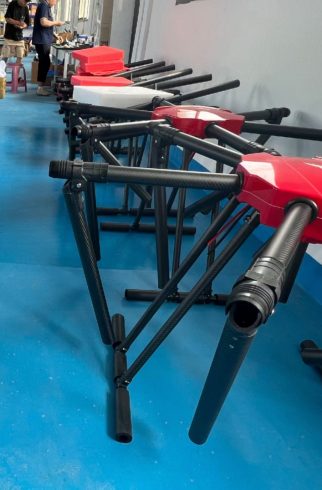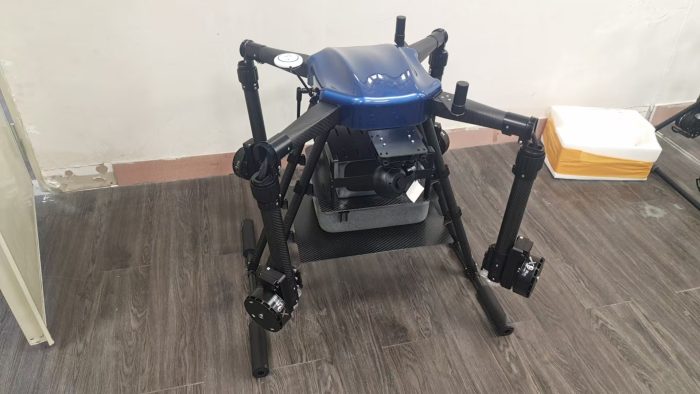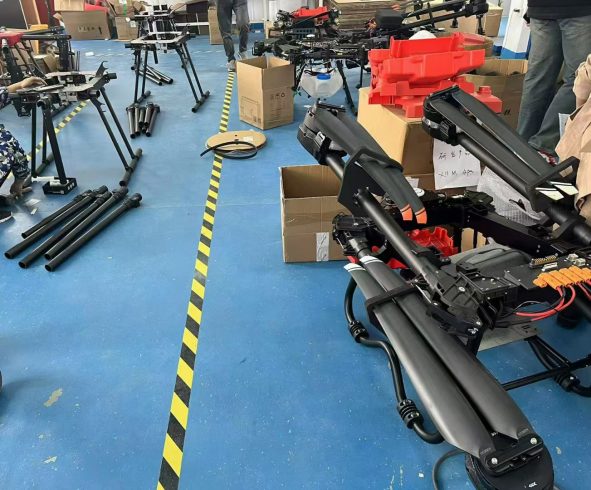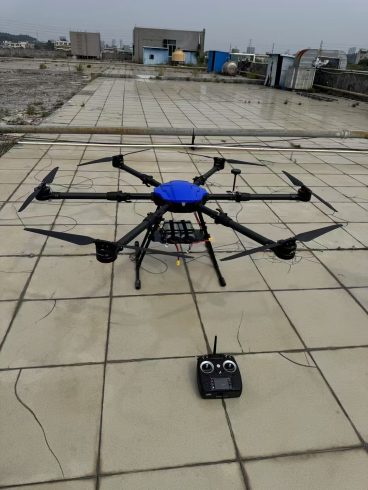![图片[1]-Drone Spraying for Pest Outbreak Response: Rapid, Precise, and Scalable Solutions-msoen](https://www.msoen.com/wp-content/uploads/2025/04/edbbb52c8b184639-1024x576.jpg)
Pest outbreaks—whether locust swarms, invasive beetles, or fungal epidemics—can devastate crops within days, threatening food security and farmer livelihoods. Traditional response methods, reliant on ground crews or manned aircraft, often lag behind the speed and scale required to contain such crises. Enter drone spraying: a nimble, data-driven solution that delivers rapid, targeted interventions to curb pest outbreaks while minimizing environmental harm. This article explores how drones are transforming pest management into a proactive, precision-driven practice.
The Growing Threat of Pest Outbreaks
Climate change, globalization, and monoculture farming have amplified the frequency and severity of pest outbreaks:
- Locust Swarms: A single swarm can consume 200+ tons of crops daily, affecting 20 million people in 60 countries (FAO).
- Invasive Species: Fall armyworms, spotted lanternflies, and red palm weevils cause $70+ billion in global crop losses annually.
- Disease Spread: Fungal pathogens like wheat rust or banana fusarium wilt can wipe out entire fields in weeks.
Traditional responses face critical gaps:
- Slow Mobilization: Manual spraying takes days to organize, allowing pests to multiply.
- Blanket Applications: Overuse of chemicals harms ecosystems and accelerates resistance.
- Access Limitations: Rugged terrain or flooded fields hinder ground and aerial crews.
How Drone Sprayers Revolutionize Pest Response
- Rapid Deployment
- 24/7 Readiness: Drones can launch within hours of detecting an outbreak, operating day or night with thermal imaging.
- Autonomous Fleets: Pre-programmed drone swarms treat hundreds of acres simultaneously, outpacing ground teams.
- Precision Targeting
- AI-Powered Detection: Multispectral cameras and machine learning identify pest hotspots (e.g., locust egg beds, aphid clusters) in real time.
- Variable Rate Spraying: Adjust chemical volumes mid-flight—higher doses in infested zones, lower in periphery.
- Species-Specific Solutions: Drones apply pheromones, biopesticides, or nano-coated chemicals tailored to the pest.
- Scalability
- Modular Payloads: Swap tanks for insecticides, fungicides, or biological agents (e.g., Metarhizium fungus for locusts).
- Swarm Technology: Coordinate 10–100 drones across vast regions, ensuring no infestation goes untreated.
- Environmental Safety
- Drift Reduction: Electrostatic nozzles and low-altitude flight keep chemicals on target.
- Eco-Friendly Inputs: Prioritize organic or biodegradable agents to protect pollinators and waterways.
Key Technologies Driving Effective Responses
- Real-Time Surveillance Integration
- Satellite Data: Detect early signs of outbreaks (e.g., vegetation stress) via platforms like NASA’s ECOSTRESS.
- IoT Traps: Smart pheromone traps alert drones to pest presence via wireless networks.
- Advanced Spray Systems
- Ultrasonic Atomizers: Generate ultra-fine droplets (10–50 microns) for even coverage in dense infestations.
- Pulsed UV Lights: Disorient nocturnal pests (e.g., moths) to enhance spray efficacy.
- AI-Driven Predictive Models
- Forecast outbreak spread using weather, migration patterns, and historical data.
- Optimize spray schedules based on pest life cycles (e.g., target larvae before maturation).
- Resilient Drone Design
- Waterproof Drones: Operate in rain or high humidity to treat outbreaks during monsoon seasons.
- Long-Range Models: Cover 50+ km per charge in remote regions.
Case Study: Combating Desert Locusts in East Africa
During the 2020–2021 locust crisis, drones were deployed in Kenya and Ethiopia to supplement ground efforts:
- Rapid Mapping: Drones identified locust breeding grounds in inaccessible regions using NDVI anomalies.
- Night Ops: Thermal cameras located roosting swarms; drones sprayed biopesticides at dawn when locusts were least mobile.
- Results: 60% faster containment than manual methods; 90% reduction in pesticide use vs. manned aircraft.
Overcoming Challenges in Drone-Led Pest Control
- Regulatory Hurdles
- Solution: Work with governments to fast-track permits during emergencies (e.g., FAO’s locust response protocols).
- Cost Barriers
- Solution: Subsidize drone fleets for farming cooperatives; offer pay-per-acre services.
- Technical Training
- Solution: Develop mobile apps with AR tutorials for drone assembly, maintenance, and spray calibration.
- Resistance Management
- Solution: Rotate chemical and biological agents to prevent pest adaptation.
Future Innovations in Pest Response Drones
- Gene-Editing Sprayers: Deploy RNAi-based pesticides that silence pest genes without harming non-target species.
- Autonomous Swarm Learning: Drones share data to improve collective AI accuracy across regions.
- Drone-Released Predators: Disperse beneficial insects (e.g., ladybugs for aphid control) alongside chemicals.
- Blockchain Traceability: Immutable logs prove compliance with organic or low-residue certifications.
Steps to Implement Drone Spraying for Outbreaks
- Risk Assessment: Map historical outbreak zones and high-risk crops.
- Pre-Position Assets: Store drones and approved chemicals near vulnerable regions.
- Collaborate Early: Partner with agronomists, governments, and drone operators to streamline response plans.
- Monitor & Adapt: Use post-spray drone surveys to evaluate efficacy and adjust strategies.
Conclusion
Drone spraying is redefining pest outbreak response from reactive firefighting to proactive precision. By merging speed, scalability, and sustainability, this technology offers a lifeline for farmers battling climate-driven infestations and invasive species. As AI, biotechnology, and drone hardware evolve, the vision of a pest-resilient food system becomes increasingly attainable.
For governments, agribusinesses, and smallholders alike, investing in drone-led pest control isn’t just about saving crops—it’s about safeguarding global food security in an era of escalating ecological uncertainty.












暂无评论内容